Coaxial speaker cable are widely used these days due to the great quality of sound they produce and the simplicity they provide. These cables always guarantee correct digital audio signal transmission.
A male RCA connector is often found on both ends of a coaxial speaker line. They are immune to interference and are capable of delivering lossless audio output.
Furthermore, they may power a variety of equipment such as cable/satellite boxes, DVRs, HDTVs, Blu-Ray/DVD players, subwoofer speakers, game consoles, and so more.
In this overview of coaxial speaker cables, we will go through coaxial cables in depth. We’ll look at the physical and electrical properties of a standard coaxial cable.
Following that, we will look at several sorts of coaxial cables.
In terms of sound, we will examine the advantages and disadvantages of utilizing a coaxial speaker cable rather than HDMI or Optical Cables enabling digital audio transmission.
Table of Contents
What Is Coaxial Speaker Cable?
The name “coaxial” refers to the cable’s structure. The cable’s core is coated with an interwoven layer of copper, and the core and coating are aligned on the same axis, thus the name.
Coaxial speaker cables use RF signals to carry audio signals from an input source (a computer or another audio output) to an output source (the speakers).
These cables produce clear sound at the speaker’s end. The audio signals they convey encompass the full audible audio range as well as the lower end of the infrared spectrum, ranging from 20KHz to 300 GHz.
What Are The Uses Of Coaxial Speaker Cable?
People use this cable for high-speed data buses and telephone transmission, as well as networking cables, cable television hookups, and numerous receivers.
Coaxial cables are utilized in radio communication systems, telecommunication systems, and wireless systems.
We use them for TV antennas, HD TV, cable TV, cable internet, audio and video transmission, and other similar purposes.
For various purposes, several cable types and connections are employed. For radio applications, 50 coax cables (such as RG-8 and RG-58) are utilized.
The most common cable types such as RG-6, RG-7, RG-11, and RG-60 along with connector types such as the F-type connector are used for cable TV, high-speed cable internet, and satellite TV.
Types Of Coaxial Speaker Cable
Coaxial speaker cables are classified according to their input impedance, structure, and RG Standards.
Based On Impedance
50Ω Coaxial Speaker Cables

These reduced impedance cables are primarily used for radio communications.
75𝛀 Coaxial Speaker Cables
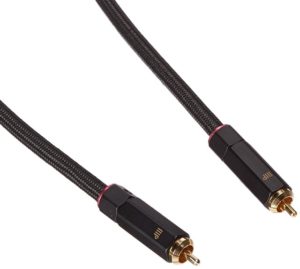
The 75𝛀 cable is a well-known and widely used coaxial cable.
The cable you use for cable TV is usually a 75𝛀 coaxial cable.
In addition to cable TV, the 75𝛀 coaxial cable is employed in RF video and audio transport.
Based On Design & Properties
Flexible Coaxial Cable

It is a typical form of coax with a braided exterior conductor constructed of fine wires.
The cable becomes more flexible with this braiding, but it lacks full insulation.
As a result, signals can leak through the microscopic pores in its braid.
Semirigid Coaxial Cable

If shielding and limiting signal leakage are more important to you than flexibility, the semirigid coaxial cable is an excellent alternative.
As the name implies, this form of coaxial cable is stiff and sturdy, comparable to pipes.
An outer metallic coating serves as a secondary conductor. Furthermore, the metal layers aid in keeping a consistent impedance along the length of the cable.
However, due to the cable’s rigid structure, it will not be very flexible.
Dual Coaxial Cable
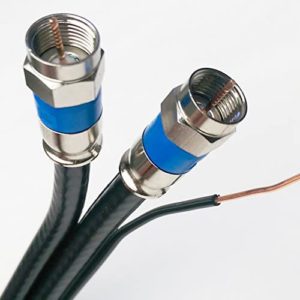
Two distinct coax wires are encased in a common exterior insulating jacket in this model.
As a result, this kind can manage quicker data transfer with increased bandwidth.
Twinaxial Cable

Each dual axial cable contains coupled insulated conductors encased in a shared exterior conductor.
These conductors in the middle must be parallel to each other or curved.
People commonly use this type in multiple high-speed data transfers for massive computer systems.
Triaxial Cable
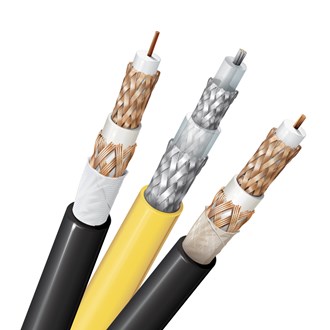
Triaxial cable, often known as Triax cable, has two exterior conductors divided by a dielectric layer.
An outbound conductor functions as a signal ground, while the other functions as an earth ground.
As a result, this kind provides higher signal strength and shielding.
Based On RG Standard
RG (Radio Guide) is another form of coax cable. Although the RG standard code is no longer in use, the wires are still commonly utilized.
This code will tell you the diameter of the wire, its out diameter, dielectric type, impedance, and shielding.
Based on the code, you will know what sort of connection will work best with each RG cable type. RG coax cables are classified as RG-6/U, RG-6/UQ, RG-8/U, RG-8/X, RG-11/U, RG-58/U, RG-59/U, and RG-60/U.
Types Of Connectors
The most popular connectors for coax cables are BNCs, SMAs, MCXs, 7/16 DINs, QMAs, N-Types, SMBs, TNCs, RCAs, and F-types.
F-type
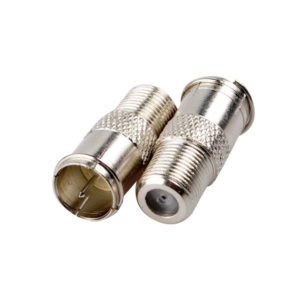
The F-Type Connector is a common type of Coaxial Cable Connector.
If you have cable TV, you most likely utilize this style of connector to connect the cable to your set-top box or receiver.
In the cable television industry, the combination of RG-6 Coaxial Cable with an F-Type Connector is fairly prevalent. As a result, they are widely available and reasonably priced.
In terms of results, Coaxial Cables with F-Type Connectors can typically withstand frequencies up to 1 GHz. F-Type Connectors are available in 50 and 75 impedances.
N-type
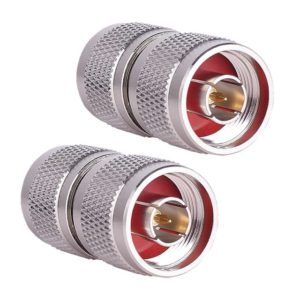
It is among the first Microwave RF Connectors that can operate at frequencies up to 11 GHz, with some variants capable of reaching up to 18 GHz.
We use N-Type connections in a variety of low-frequency microwave applications due to their tough and weather-proof construction.
Spectrum analyzers, antennas, and other devices employ N-Type connections with coaxial cables as input.
SMA Connector
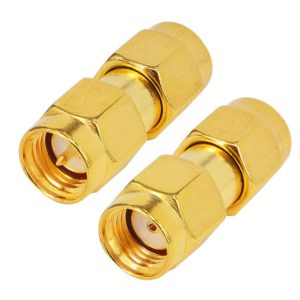
SMAs are mostly used in RF applications. However, they were initially designed for frequencies spanning from 0 to 12 Hz.
Modern SMAs may operate at frequencies of up to 24 GHz.
They design SMAs for mobile phone transmitters, handheld transmitters, wifi transmitters, and microwave devices.
SMB Connector
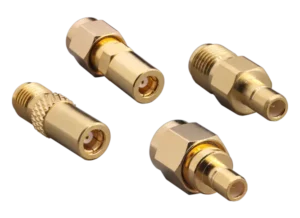
The SMB Connector is a suitable alternative if you need a much smaller connector than the SMA Connector.
BNC Connector
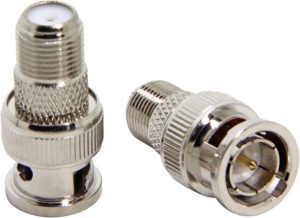
BNC connections are an abbreviation for Bayonet Neil-Concelman connectors.
You can find these cables in RF and video applications such as televisions, testing tools, radio frequency equipment, and radios.
Aside from its ease, our resident audiophiles love this coax cable connection for its stable wide-range frequencies ranging from 10 GHz to 4GHz.
Anything beyond that, on the other hand, may result in radiation and loss.
TNC Connector
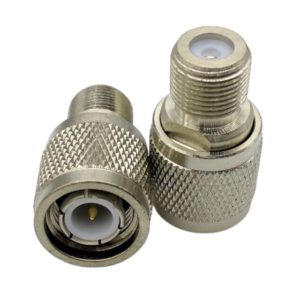
Threaded Neil-Concelman (TNC) choices are similar to BNC but exist in a threaded variant.
When working with microwave frequencies, however, our staff would prefer TNC connections over BNC.
Unlike other coaxial cable connections, it only exists in a 50-Ohm configuration, yet it can withstand activities up to 11GHz.
These high frequencies are mostly due to its screw connection and quality threaded construction, which BNC lacks.
RCA Connector

RCA connections are another popular choice to explore.
These cables can tolerate frequencies up to 10 MHz.
Although RCA is the industry’s oldest form of connection, it is still widely available.
If you plan to utilize the coaxial wire for home theater systems, RCA connections in a mounted subwoofer will suffice.
MCX Connector

Connector-required equipment is different for individual cases. So, in case of one that can accommodate applications with restricted size or space, tiny coaxial connections might come in handy.
It works well with antennas and PCBs. This connector’s electrical capability can handle up to 6GHz.
We can find these coax cable connectors in telecommunications, wireless connectivity, and GPS applications.
It’s also available in 50-Ohm and 70-Ohm versions.
QMA Connector

The QMA Connector is a quick-connecting alternative to the SMA Connector.
QMA connectors can tolerate frequencies up to 6 GHz.
They use the QMA Connector in mobile phone base station antennas, defense, and military RF communication systems.
7/16 DIN Connector

The 7/16 DIN Connector is another threaded RF Connector. This connector is used in cell phone antenna networks for high-power RF connections.
The axis of all these distinct cylindrical layers is the same if you take a cross-section of them.
Example of some coaxial speaker cables
AmazonBasics Digital
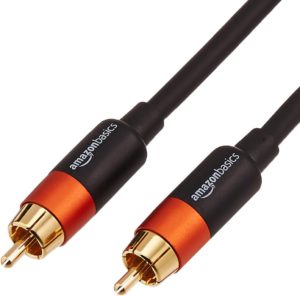
The AmazonBasics Digital Audio RCA Compatible Coaxial Cable is a high-quality audio cable that works with nearly every device.
The AmazonBasics cable may be connected to the input jacks on the CD player, DVD player, Blu-ray player, game console, and stereo receiver. The cable is available in lengths of four, eight, fifteen, and twenty-five feet, with two male RCA connections at each end.
Encryption and double-shielding keep outside interference at bay, allowing you to get the most out of your sound system. This coaxial cable produces clean and accurate sound.
It’s also simple to set up: simply insert the jack into the input of your device and you’re ready to go. The AmazonBasics Digital Audio RCA Compatible Coaxial Cable is a great method to receive high-quality sound.
WBC Cable
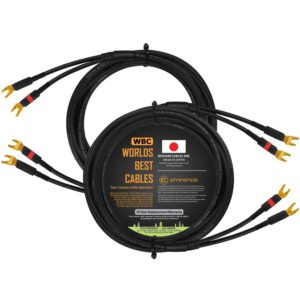
The World Best Cable Coaxial Audiophile Speaker Cable is an excellent method to enhance your listening experience.
It is constructed of oxygen-free copper for enhanced conductivity and has a long-lasting PVC jacket. For ease of installation, the wires are additionally color-coded.
This cable is perfect for high-end audio systems due to its high-quality construction using Mogami 3082 wire and Eminence Gold Banana Connectors.
There is a lifetime warranty for this product. Customers can also ask the firm for bespoke assembly orders.
Ultra Clarity Cable
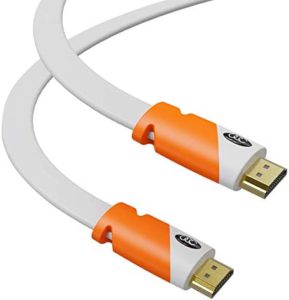
This Ultra Clarity cable is shielded with three layers to avoid electromagnetic or radio frequency interference. It is capable of data speeds of up to 3 GHz.It’s also UL-rated for in-wall usage, so you know it’ll endure.
It also comes with a lifetime warranty for further peace of mind. It’s ideal for binge-viewing your favorite program or seeing a new movie.
Mediabridge Ultra Series Cable
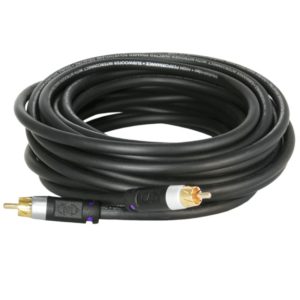
The Mediabridge Ultra Series Digital Audio Coaxial Cable is a high-quality cable that provides outstanding sound without signal interference to customers. This American-made product comes in diameters of 2, 4, 6, 15, and 25 feet.
The dielectric insulation on the digital audio coaxial cable makes it more robust and improves sound quality by decreasing electromagnetic interference.
Additionally, this product’s copper braid shielding resists RF and EM interferences.
Also, this product contains 24K gold-plated connections that provide perfect contact with the equipment for optimum signal transmission with little distortion. Furthermore, the Mediabridge Ultra Series Digital Audio Coaxial Cable is CL2 certified, which means it is secure for wall use.
How To Use Coaxial Cables For Speakers & Subwoofers
A coaxial speaker cable is a long-lasting choice for transmitting professional-level audio signals from an amplifier or receiver to speakers.
To connect to an externally powered subwoofer, many audio systems employ RCA coaxial wires. You’re already aware of the technique of assembling coaxial speaker cables if you know how to attach your own connectors to a speaker wire.
You may accomplish it by hand by cutting the connections, removing the shielding, and wrapping the braiding into a single thread between the two.
When connecting a subwoofer to an audio receiver across long distances, a coaxial cable for a subwoofer can be used.
All television cables, including digital coaxial cables, have a standard impedance of 75 ohms.
As a result, they are completely interchangeable. Other cables with RCA connections meant for audio transmissions, such as the subwoofer cable, may not have a 75-ohm impedance.
Cimple Co Cable

This cable is 25 feet long and very inexpensive.
To keep your system from blowing up, you’ll need at least this length if you want to convert your coax cable into a speaker cable.
As a result, if you require a longer cable, The Cimple Co Coax Cable is an excellent option to consider.
Phat Satellite Cable
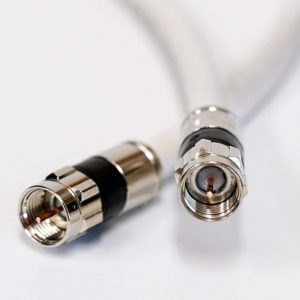
Another alternative is to use the Phat Satellite coax cable, which is 100 feet in length.
It is capable of overcoming link resistance and working effectively with bigger speakers and subwoofers.
Advantages of Using Coaxial Cables
Coax cables are less susceptible to noise and interference than standard twisted pair connections.
Generally, users have a lot of fun working with different types of coaxial cables over short distances since they provide consistent performance and better sound quality than standard speaker wire.
While the shorter length may be an issue, the thicker conductor and lower induction rate make up for it. The cheaper cost of coax cables is the icing on the cake.
This connection is ideal for audiophiles on a tight budget since it is relatively inexpensive without losing visual or audio quality.
Disadvantages of Using Coaxial Cables
The use of this type of audio signal transfer may generate unpleasant electrical noise.
Because it’s only one cable, if there’s a flaw, everything stops operating, therefore maintain the cable intact.
While these cables are recognized for significantly improving audio connection quality, coaxial configurations do not enable popular sound systems like DTS-HD Master Audio.
If you use it frequently and extensively, you may notice that its speed fluctuates from time to time.
Last Words
Coaxial speaker cable deliver professional-quality sound through an extremely robust connection. If you’re having significant signal noise or interference, coaxial speaker cables may be the solution.
This concludes our detailed information on coaxial speaker cables. You now know everything there is to know about coax speaker cables as well as coax cables in general. Thanks for reading this far.
Check also:

![Coaxial-Speaker-Cable-[Full-Guide-2022]](https://calibbr.com/wp-content/uploads/2022/12/Coaxial-Speaker-Cable-Full-Guide-2022-800x400.jpg)






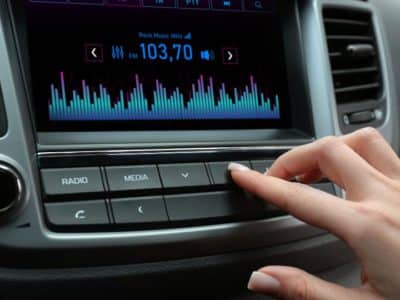






![The Top 12 Best One Piece Arcs [Ranked]](https://calibbr.com/wp-content/uploads/2022/06/The-Top-12-Best-One-Piece-Arcs-Ranked-180x180.jpeg)